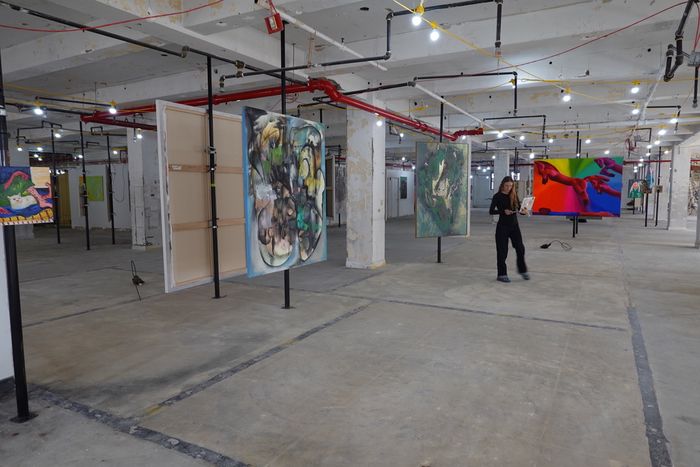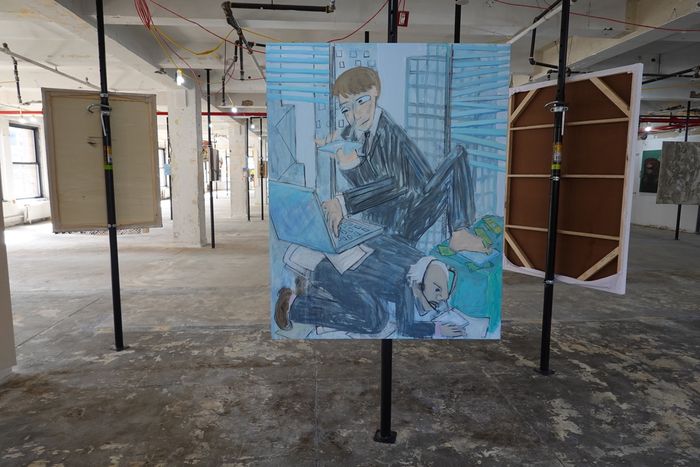FALCON, a 40,000-square-foot art show in a Midtown office; an immersive exhibit of art by actor Johnny Depp in a Chelsea commercial building; and the 45,000 square foot Complete Playground, off Wall Street.
Photo-Illustration: Curbed; Photos: Adriane Quinlan, Complete Playground, Optimist Consulting
Since 2016, the painter Marco Boggio Sella has been leasing buildings in Brooklyn to break into artist studios and rent out. But as prices for commercial space in Manhattan flattened post COVID, he started to wonder if the numbers would make sense there, too. Last year, he landed on a 1926 building around the corner from Port Authority where the price was right and the landlord was eager. (Eager enough to loan him an empty floor, at no cost, to put up an art show.) Sella now runs 16,000 square feet of studio space and, eight floors below, has newly opened a 40,000-square-foot exhibition of 173 paintings and sculptures, including sweaters by the artist Sam Barsky and small abstractions of skylines by Robert Storr. The place is echo-y and grand, big enough to get a little lost in. As we strolled through one of the floors on a recent Friday afternoon, his friend Paolo Barbieri Marchi, a fellow artist and the show’s co-curator, ribbed him as the “King of Space.”
Curators of FALCON compared the vast space to a “forest” of paintings. Work by Paololuca Barbieri Marchi (left) and a technicolor acrylic by Austin Lee (center).
Photo: Adriane Quinlan
It feels like there are a lot of kings of space at the moment. The companies that sell culture and experience are now taking on such huge leases that we may be approaching a critical mass of big. Last year, the 40,000-square-foot spectacle of Mercer Labs opened downtown and an “immersive experience” built around Johnny Depp’s odd paintings took 10,000 square feet in Chelsea. In Times Square, one of the fall’s biggest retail leases — 50,000 square feet — was snapped up by a company looking to build a life-size game similar to the 52-room Monopoly-inspired maze they built in Britain. Complete Playground opened last February, with the owner touting it as the city’s biggest indoor playground — 45,000 square feet of ball pits, slides, and party space in a former trading floor off Wall Street. And in Brooklyn, the artsy, Instagram-friendly Space Club took over what was once a 36,000-square-foot school.
A show of artwork by Johnny Depp in Chelsea’s Starrett-Lehigh Building had room for what it sold as a “360-degree visual experience.”
Photo: A Bunch of Stuff
I could go on. Outside Penn Station last year, the former Kmart (RIP) became a Life Time fitness club big enough to house the city’s largest indoor pickleball complex. (That’s seven courts, if you’re curious.) And that is still quite a bit smaller than its 76,000-square-foot location at One Wall Street, a former office building turned luxury tower where another 55,000 square feet of space was leased to Printemps. (Enough floorspace for a golf-cart-size sculpture of an apple.) A 15-minute walk away at the South Street Seaport, 75,000 square feet of space was leased this Spring to Meow Wolf, an immersive-experience chain that began, like Marco Boggio Sella’s studio business, as a less formal art collective.
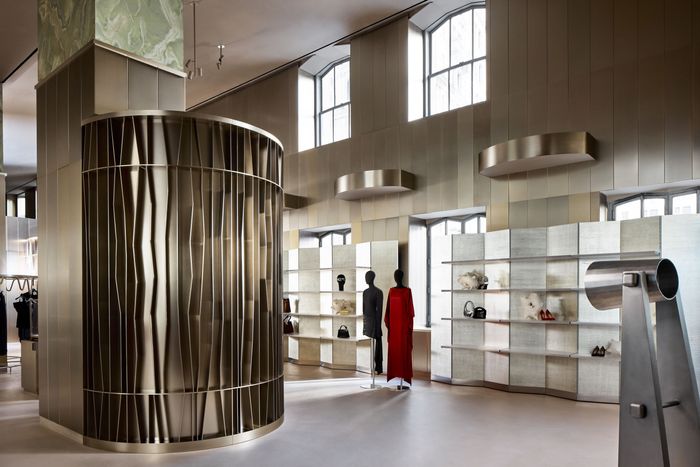
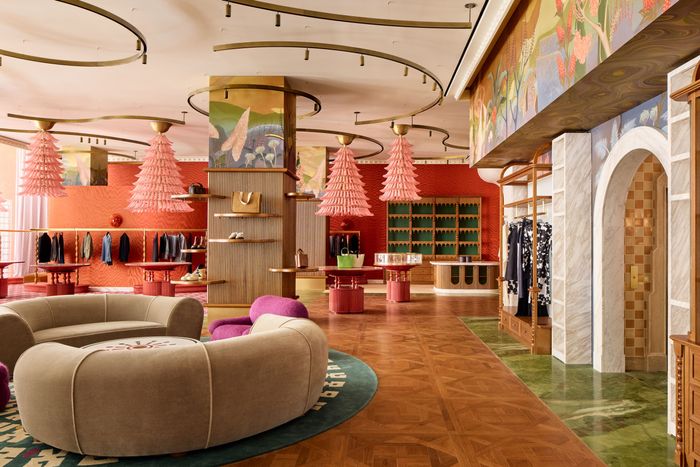
At Printemps, an excess of space is part of the luxury experience — the total opposite of the classic New York shopping trip to a cramped, chaotic boedega. From left: Photo: Gieves AndersonPhoto: Gieves Anderson
At Printemps, an excess of space is part of the luxury experience — the total opposite of the classic New York shopping trip to a cramped, chaotic boe…
At Printemps, an excess of space is part of the luxury experience — the total opposite of the classic New York shopping trip to a cramped, chaotic boedega. From top: Photo: Gieves AndersonPhoto: Gieves Anderson
So is the trend of big somehow getting bigger? According to CoStar, which analyzes commercial data on commercial real estate, companies that sell experiences grabbed a record amount of space last year — 893,809 square feet — almost twice as much as that sector did in 2023. There were also just more of these deals, with 88 leases signed, versus 61 the year before. And Colliers’, a real estate and investment firm, found the average size of these businesses is also getting bigger. (Though only “slightly,” says Anjee Solanki, an executive there.) When it comes to megasize pickleball courts and rock-climbing walls, data from CBRE shows that larger health clubs are leasing an average of 33,000 square feet — a nearly 10,000-square-foot jump from before the pandemic. We are in a big boom.
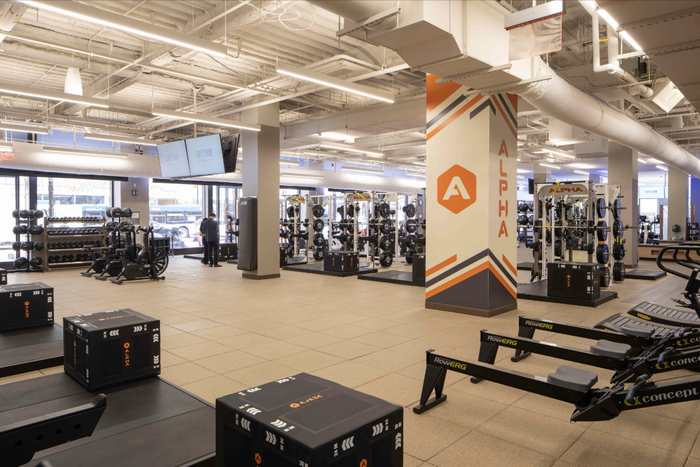
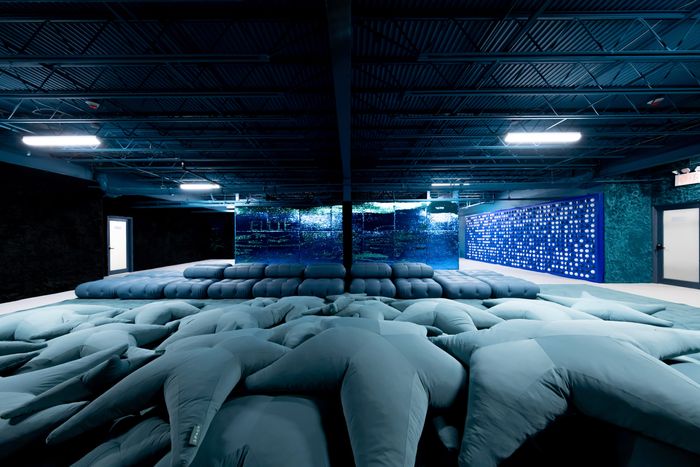
From left: A 54,000-square-foot Life Time took over a former Kmart near Penn Station. Photo: Life TimeThe basement of Space Club’s location in Fort Greene. Photo: Courtesy of Space Club
From top: A 54,000-square-foot Life Time took over a former Kmart near Penn Station. Photo: Life TimeThe basement of Space Club’s location in Fort Gre…
From top: A 54,000-square-foot Life Time took over a former Kmart near Penn Station. Photo: Life TimeThe basement of Space Club’s location in Fort Greene. Photo: Courtesy of Space Club
Why the increase? “There’s always a bare-minimum amount of space for the business model to work. But the maximum is a lot more fluid,” says Cassie Durand, the commercial broker who negotiated on behalf of Meow Wolf at the Seaport. That’s because if a tenant doesn’t need every inch, they can sublet space, get a deal from the landlord to leave some out, or find themselves operating a sideline business, she explains. (Printemps has a coffee shop, a fine-dining restaurant, a raw bar, a Champagne bar, and a lounge-y bar.)
Tenants in huge spaces can experiment with different lines of business, diversify, and find themselves running what feels like mini-malls. The owner of Complete Playground, Alex Reznik, now oversees separate spaces for kids of different ages, a floor for parents to lounge and throw birthday parties, and an upstairs restaurant — all of which he can reboot, after hours, to host team-building events and glow-stick-filled teen nights. Now, he says he is looking to expand nearby to take up to 100,000 square feet — room for a potential spa, a barber shop, and co-working area so caretakers can drop off their kids and use their freedom wisely.
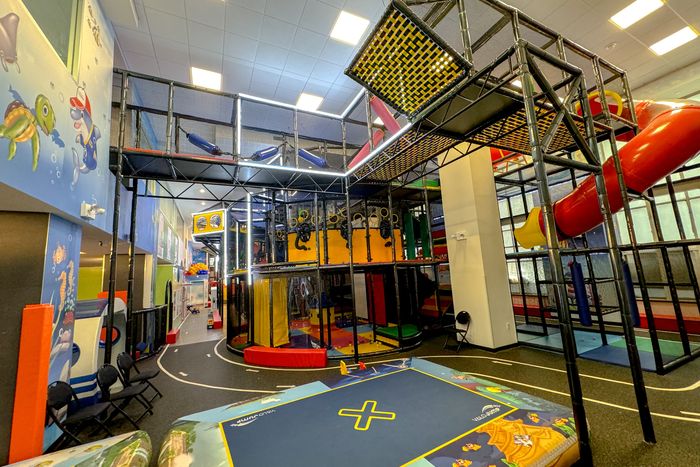
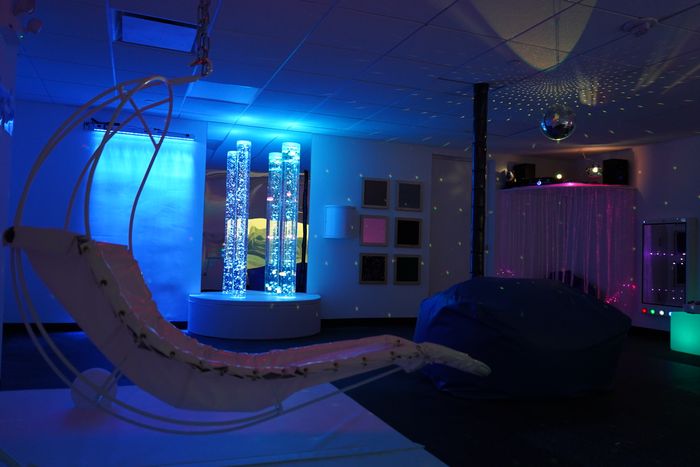
45,000 square feet means Complete Playground has space for kids of all ages and special needs. Complete Playground.
45,000 square feet means Complete Playground has space for kids of all ages and special needs. Complete Playground.
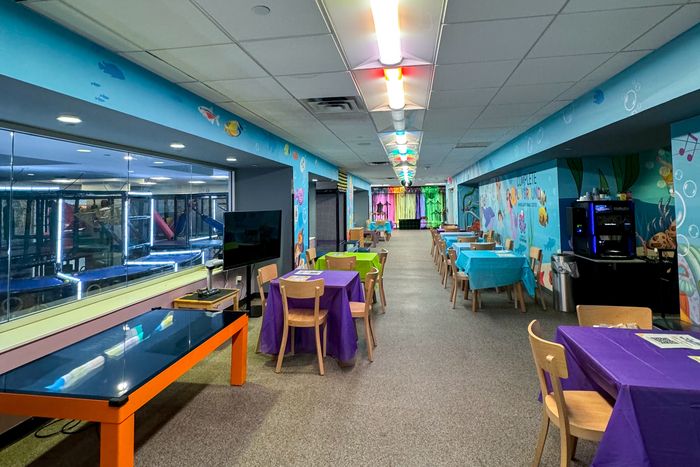
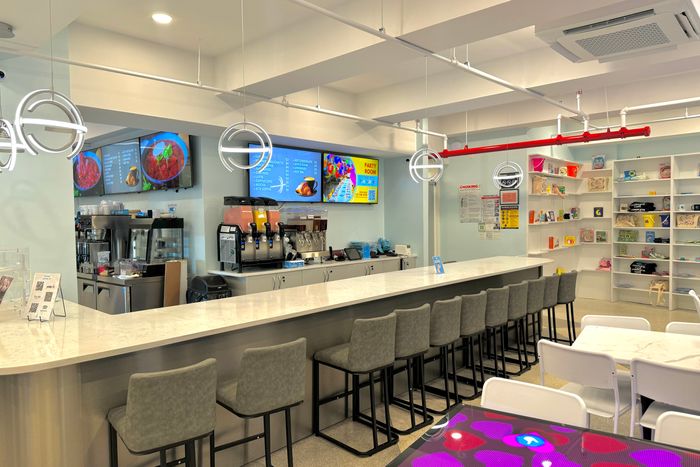
Space for kids parties looks over what was once an interim trading floor for Wall Street. Complete Playground, which runs as a non-profit, also operates a separate café. Complete Playground.
Space for kids parties looks over what was once an interim trading floor for Wall Street. Complete Playground, which runs as a non-profit, also operat…
Space for kids parties looks over what was once an interim trading floor for Wall Street. Complete Playground, which runs as a non-profit, also operates a separate café. Complete Playground.
This is pretty much the business model across the street at the 76,000-square-foot Life Time location on Wall Street. There’s a café, child-care space, and a spa’s worth of steam rooms, saunas, and plunge pools. “We don’t see a lot of square feet that we don’t like,” says Parham Javaheri, an exec who oversees development. A massive floor plan lets them pummel members with options of what to do once they get there — so they keep coming, and keep renewing. (“Retention,” he claims, is at “historic levels.”) “I don’t think in New York right now,” he says, “we can have too much space.”
Sella wasn’t intimidated by his newly acquired 40,000 square feet, either. He says that in Italy, where he’s from, showing in a big, underused old building is hardly newsworthy. “There, it’s normal,” he says. And it was also pretty normal when Sella moved to a still-industrial Williamsburg in 1996. His co-curator, Marchi, nodded. “We know how to use these offices,” he says. “Give it all to us.”
“Market Volatility (Cubist Cokeheads)” by Scott Reeder, in the FALCON show, was painted specifically for the show’s Midtown location, said the curators.
Photo: Adriane Quinlan



